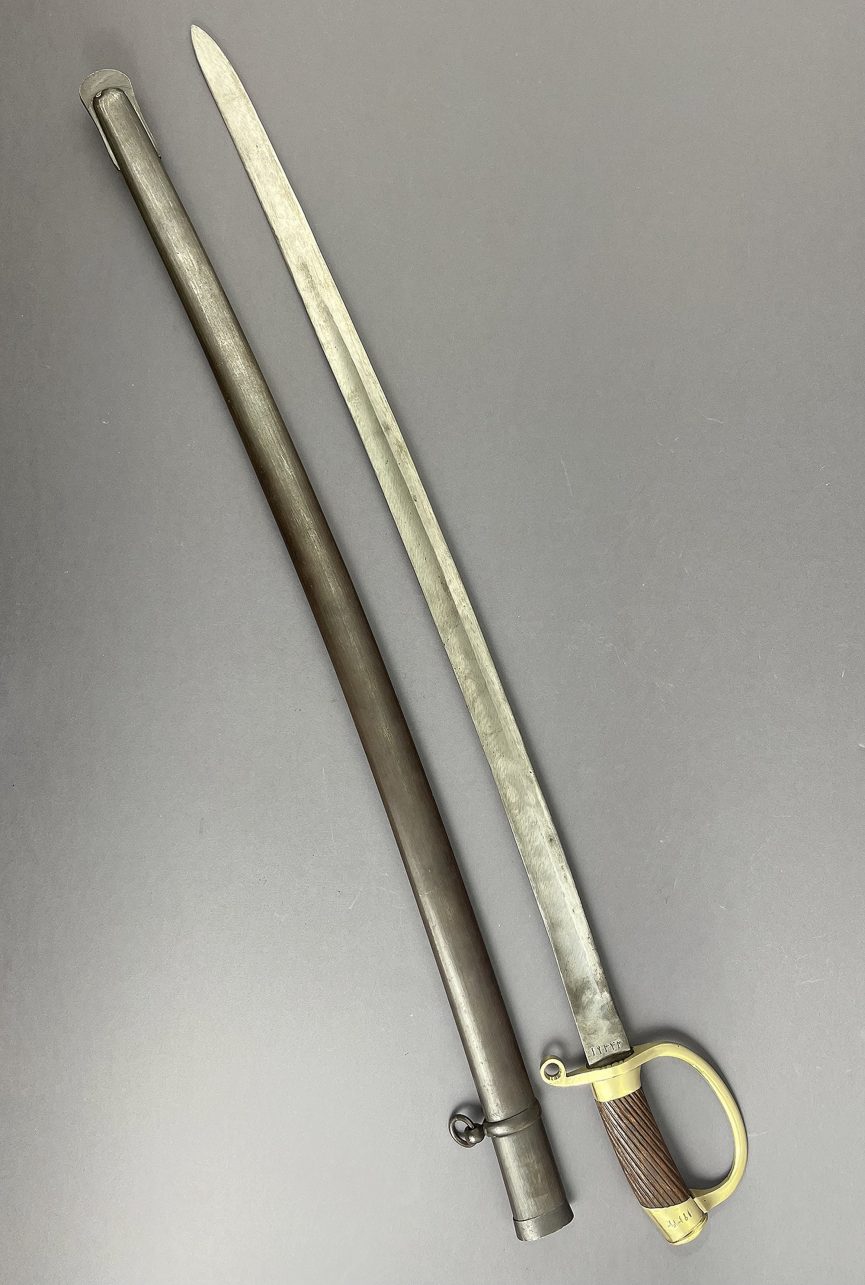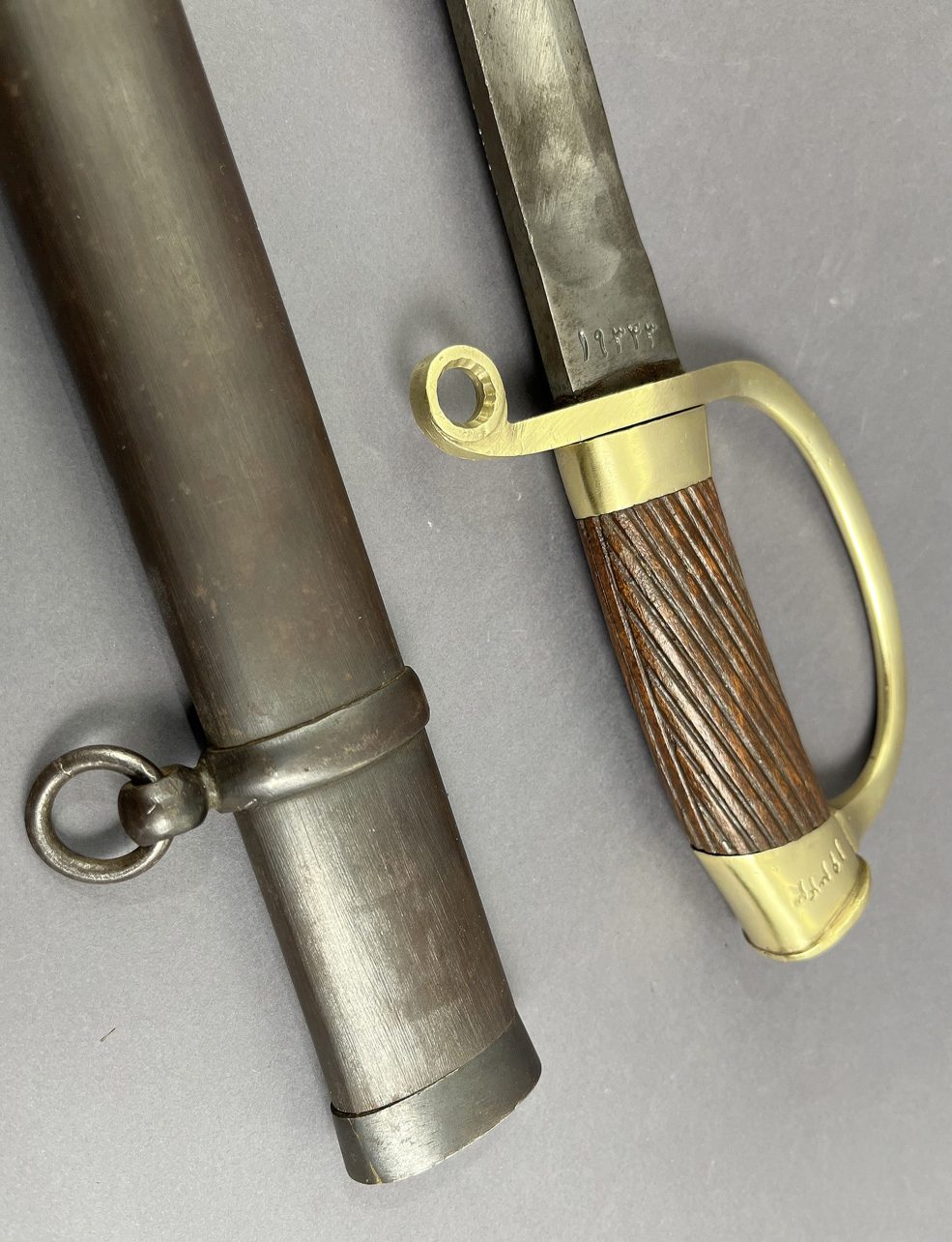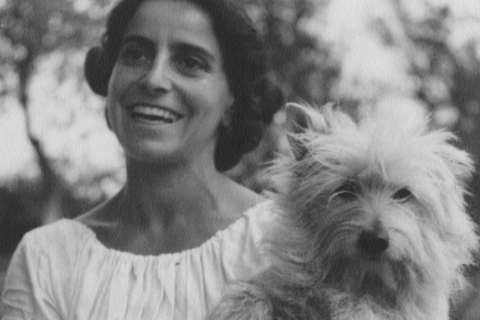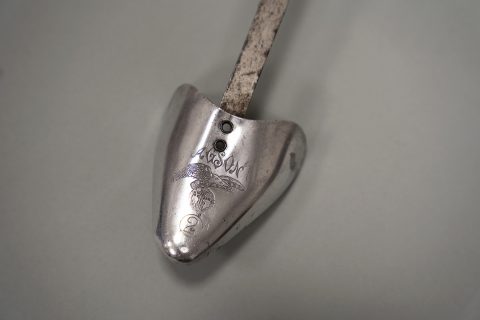Many of you probably remember Arabic fairy tales from your childhood, which are very popular all over the world and are enjoyed by children and adults alike. The characters in these tales travel extensively and experience incredible adventures, including robbers and warriors who use mysterious weapons and swords. This time, restorer Martynas Kosas will tell the story of a mysterious and, at least in our country, rare sword from Persia, a country that no longer exists, and how it ended up in his workplace, the Kaunas Ninth Fort Museum.
In 2023, the Lithuanian Customs Department handed over several exhibits to Kaunas Ninth Fort Museum. Among them, there were several swords that looked very similar to a Tsarist Russian dragoon’s sword of the model from 1881. However, the quality of manufacture, the metal scabbards, the inscriptions in Arabic (Persian) and some specific details were puzzling. When the search for information started, it turned out that these swords were not a legacy of the Russian Empire, but rather rare and little-known Persian swords, about which very little information is available.
These strange swords first appeared at gun fairs in the USA and Canada around 2000. At the fairs, they were sold out of boxes and for almost nothing: in some cases for as little as USD 10 per sword. The reason they were so cheap was that they were thought to be modern and cheap copies of Tsarist Russian dragoon swords made in India.

Even today, they are still offered at arms shows and fairs as well as at European auctions, but nowadays the price can reach €500 or more. Such a sword is usually described as “Iranian,” and if the seller is more or less knowledgeable about weapons and knows about the existence of the Tsarist Russian Army dragoon sword of the 1881 model, then it is referred to as a “Russian” or “Persian Cossack Brigade sword.”
Nowadays, most collectors and weapon experts believe that this weapon was made in Persia around the time of WWI, based on the 1881 model of a dragoon sword of the Tsarist Russian army. Such swords were used by the regular Persian cavalry, which was reformed at that time, following the Russian cavalry. The Shah of Persia liked the Russian army of the time so much that he not only reorganised his army on its model, but also set up an entire “Cossack Brigade”, which was even called the “Persian Cossack Brigade.” It was trained by Russian officers. In addition, the Persian cavalry was not only equipped, but also wore the same uniforms as the Cossacks.

As has already mentioned, the sword itself is a copy of the 1881 model of the Tsarist Russian army dragoon. The blade is made of steel, slightly curved, single-edged, with a longitudinal wide groove on both sides. The blade is shaped on both sides at the point to form a spear-shaped fighting point used for striking and cutting. Unlike the Tsarist Russian dragoon sword, which used to bear the maker’s mark, the Persian sword has numbers in Arabic (Persian) characters on the inner side of the blade, near the cross and on the upper part of the handle, indicating the weapon number. Ephesus, the handle protector, contains one protective bow. The wooden handle is carved with diagonal grooves. All parts of the ephesus, the handle protector and the pommel are made of brass. At the end of the cross, there is a loop for attaching a leather tassel. Unlike the Russian sword, the scabbards of the Persian sword are made of steel, have one suspension ring and are painted black.
After gathering as much information as possible and identifying the uniqueness and rarity of this sword, a decision was made to conserve it and present it to the public, currently only by publishing the information in this article.
This is how the sword ended up in the museum restorer’s workshop. Before the work began, the sword was photographed. In the next stage, the sword was dismantled and every part was cleaned and conserved. Interestingly, every part of the sword, including the wooden hilt, was numbered, with the sword number in Arabic (Persian). In addition, the numbers of all the parts matched. This means that the sword is original, as it was made and assembled at the time of manufacture. This sword has not been reassembled using parts from another sword, nor has it been broken or repaired; possibly, it was never dismantled at all. The unmarked parts were just two small screws. An examination of the sword, its details and a comparison with the museum’s model of the Tsarist Russian Dragoon sword of 1881 clearly shows a much rougher production of the parts of the sword as even the blade is sharpened very roughly. This is surprising, especially taking into consideration that Persian cold weapons were renowned for the quality of their manufacture at the time. The brass and iron parts were mechanically cleaned using a variety of restoration chemicals. After cleaning, the parts were coated with preservative wax and polished. After this work, the sword was reassembled. The conserved object was transferred to the museum for further storage.






